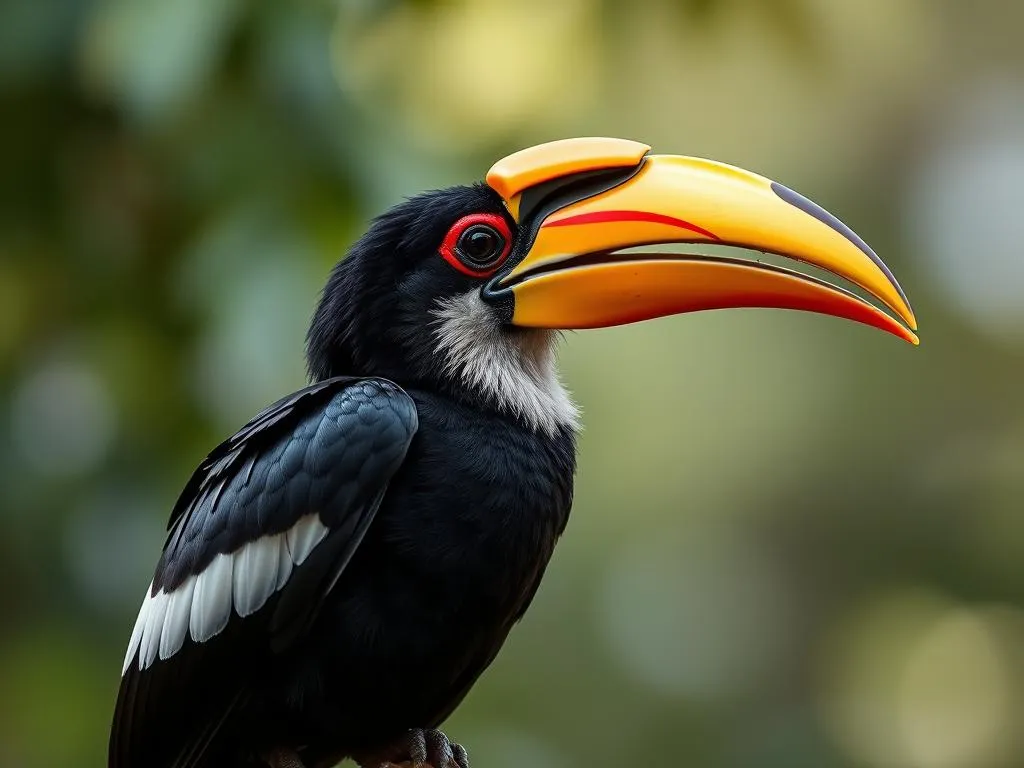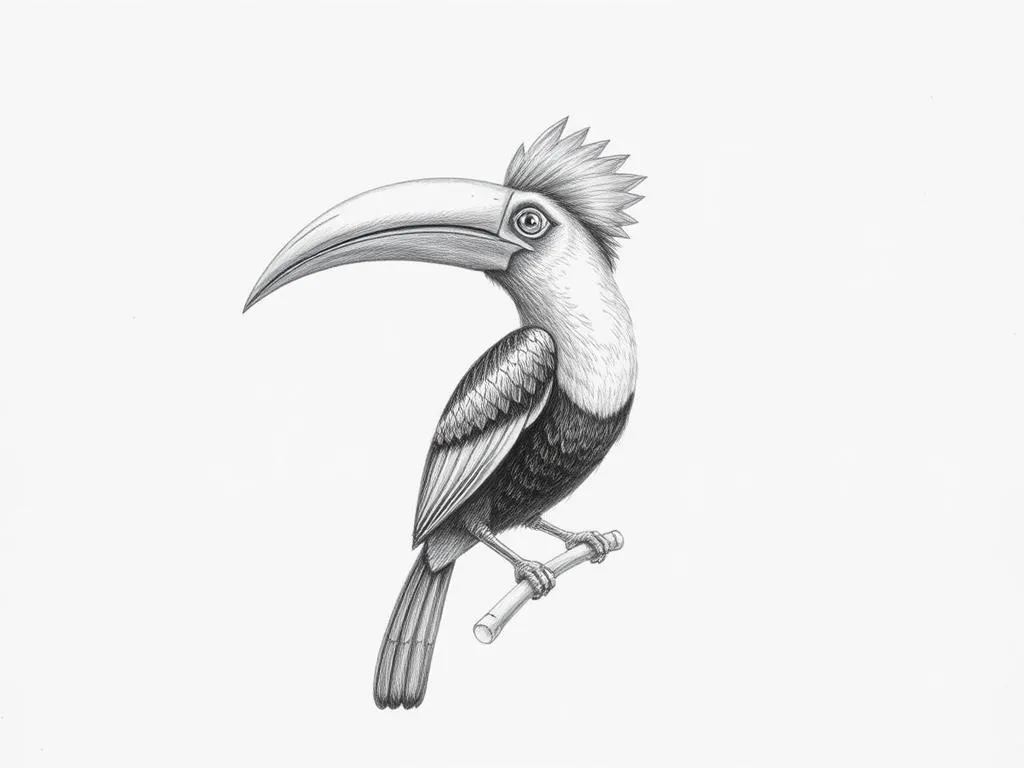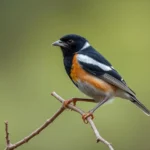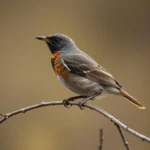The Enigmatic Hornbill: Symbolism and Spiritual Significance

Disclaimer: Some images on this website are AI-generated artworks and may not accurately represent real animals.
The hornbill is a bird that captivates both the eye and the spirit. Known for its remarkable physical characteristics and vital ecological role, the hornbill carries profound symbolism and meaning across various cultures. This blog post explores the fascinating world of hornbills, delving into their physical traits, habitats, and the deep-seated significance they hold in human consciousness.
Understanding the Hornbill
Physical Characteristics
Hornbills are renowned for their striking appearance. Below is a table highlighting some key physical traits:
| Feature | Description |
|---|---|
| Bill | Large, curved, and often brightly colored |
| Plumage | Varies by species; generally vibrant hues |
| Size | Ranges from medium to large (approximately 1 to 4 feet) |
| Eyes | Prominent and expressive |
| Legs | Strong and sturdy for climbing and perching |
The hornbill’s most distinctive feature is undoubtedly its large bill, which can be adorned with vivid colors and unique patterns. This bill is not just for display; it plays a crucial role in feeding and attracting mates. The bird’s plumage, ranging from deep blacks to vibrant yellows and reds, adds to its allure, making it a favorite among birdwatchers and photographers alike.
Habitat and Behavior
Hornbills thrive in a variety of habitats, predominantly in tropical and subtropical forests across Africa and Asia. They are social creatures often found in small groups, displaying complex social behaviors.
-
Nesting Habits: Hornbills have unusual nesting habits. Many species exhibit a unique behavior where the female seals herself inside a tree cavity during breeding season, leaving just a small opening for the male to bring food. This behavior offers protection from predators and ensures the safety of their young.
-
Feeding: Hornbills are omnivorous, primarily eating fruits, insects, and small animals. Their role in seed dispersion is critical for maintaining the health of their ecosystems.
Cultural Significance
Throughout history, hornbills have held significant cultural importance. In many indigenous cultures, they are revered as symbols of strength and fertility, often appearing in myths and legends. In some African tribes, hornbills are seen as messengers of the gods, while in Asian cultures, they are associated with good fortune and prosperity.
The hornbill’s symbolism often reflects the values and beliefs of the communities that regard them as sacred. Their majestic presence continues to inspire art, music, and storytelling.

Symbolism & Spiritual Meaning
Wisdom and Knowledge
One of the most profound aspects of hornbill symbolism is its association with wisdom and knowledge. These birds possess keen observational skills, often seen perched high in trees, surveying their surroundings. This behavior has led many cultures to view hornbills as wise creatures, imparting lessons of awareness and understanding.
In spiritual contexts, encountering a hornbill may serve as a reminder to seek knowledge and wisdom in one’s own life. Their presence can inspire individuals to look beyond the surface and embrace deeper truths.
Communication and Expression
Hornbills are known for their diverse vocalizations, which play a crucial role in their social interactions. These sounds range from honks to whistles and are essential for communication within their groups.
The hornbill’s ability to express emotions through vocalization symbolizes the importance of open communication in human relationships. Encountering a hornbill may encourage individuals to express their thoughts and feelings more freely, fostering deeper connections with others.
Protection and Guardianship
In various cultures, the hornbill serves as a guardian spirit, representing strength and protection. This symbolism is often reflected in art and totems, where the hornbill is depicted as a protector of the community.
For many, the hornbill embodies the concept of guardianship, reminding us of the importance of safeguarding our loved ones and our environment. In spiritual practices, the hornbill is invoked for protection during significant life events, offering a sense of security and reassurance.
Hornbill in Dreams
Interpreting Hornbill Dreams
Dreams featuring hornbills can carry rich symbolism and messages. Below is a table outlining common themes associated with dreaming of hornbills:
| Theme | Interpretation |
|---|---|
| Wisdom | Seeking knowledge or insight in waking life |
| Communication | Need for clearer expression or dialogue |
| Protection | Desire for safety or security in life |
| Transformation | Personal growth or change on the horizon |
Dreaming of a hornbill often reflects the dreamer’s current life circumstances. The messages conveyed through these dreams can serve as guidance or a prompt for self-reflection.
Personal Growth and Transformation
Hornbills in dreams are frequently associated with personal growth and transformation. Encountering this majestic bird may symbolize a period of awakening or evolution in one’s life.
Such dreams can serve as a catalyst for change, encouraging individuals to embrace new opportunities and shed old habits. The hornbill’s presence in dreams can act as a reminder to remain open to growth and to trust the journey of personal development.
Modern Interpretations
Conservation and Environmental Symbol
In today’s world, the hornbill has emerged as a powerful symbol of biodiversity and the urgent need for conservation. As habitat loss and climate change threaten their populations, these birds highlight the importance of protecting our natural environment.
Many conservation programs and initiatives are now focused on hornbill preservation, emphasizing their role as indicators of forest health. By understanding the hornbill’s symbolism, individuals can become advocates for environmental stewardship and biodiversity.
Cultural Revival
In contemporary society, there is a growing movement to embrace the symbolism of hornbills in art, literature, and spirituality. Artists and writers use hornbills to convey messages of wisdom, protection, and connection to nature.
This cultural revival is significant as it encourages communities to recognize and honor the hornbill’s contributions to cultural heritage. By weaving hornbill symbolism into modern narratives, societies can foster a deeper appreciation for this remarkable bird and its ecological role.
Key Takeaways
- The hornbill is a symbol of wisdom, encouraging individuals to seek knowledge and understanding.
- Its vocalizations represent the importance of communication and expressing emotions.
- As a guardian spirit, the hornbill embodies protection and strength in various cultures.
- Dreams featuring hornbills often indicate personal growth and transformation.
- The hornbill plays a vital role in conservation efforts, highlighting the importance of biodiversity.
- Modern culture is increasingly embracing hornbill symbolism in various forms of expression.
Conclusion
The hornbill is not just a bird; it is a symbol steeped in meaning and significance. From its remarkable physical traits to its profound spiritual implications, the hornbill captivates our imagination and inspires reflection. Acknowledging the symbolism and meaning of hornbills encourages us to appreciate their contributions to cultural heritage and the environment.
By exploring our personal connections to the hornbill, we can uncover its messages in our everyday lives. Whether through dreams, art, or conservation efforts, the hornbill serves as a reminder of the wisdom, protection, and beauty that nature offers us all.







